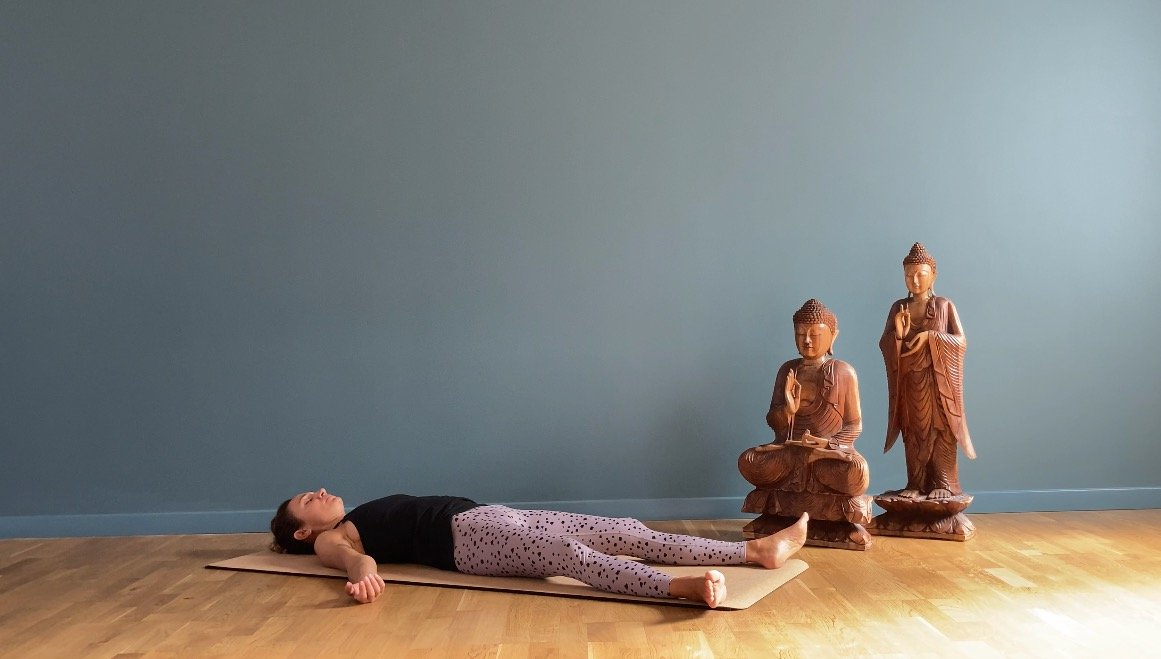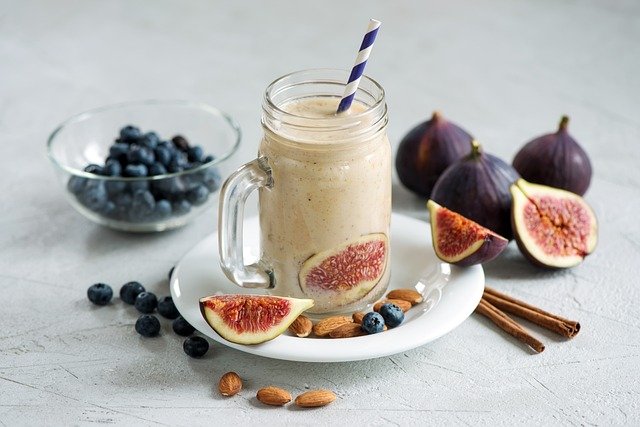Welcome back to the YouYoga.net blog. In today’s post, we are going to discover some yoga postures to relieve anxiety and stress. Yoga can help relieve anxiety and teach you how to better manage everyday stressors. There are countless yoga postures, and each of them has a certain benefit. Let us discover some of the best yoga postures to relieve anxiety and stress.
PROMO – CLICK HERE TO GET YOUR FREE LESSON
Yoga postures to relieve anxiety and stress
Here are some yoga postures that can help relieve anxiety:
- Child’s pose (Balasana) – This pose has a calming and grounding effect, helping to release tension in the back and shoulders.
- Standing forward bend (Uttanasana) – This posture helps calm the mind and reduce stress by directing blood flow to the head.
- Legs to the wall (Viparita Karani) – This posture helps reduce anxiety by calming the nervous system and promoting a sense of relaxation.
- Cat-mucca (Marjaryasana-Bitilasana) – This posture helps release tension in the back and neck and can be helpful in reducing anxiety and stress.
- Cobra (Bhujangasana) – This posture helps open the chest and release back tension and can be helpful in reducing feelings of anxiety and depression.
- Happy Baby (Ananda Balasana) – This pose is relaxing and calming and can be helpful in reducing anxiety and promoting a sense of well-being.
- Corpse pose (Savasana) – This pose is relaxing, helps calm the mind and body and can be helpful in reducing anxiety and stress.
It is important to keep in mind that every person is different and that some positions may work better than others. It is recommended to consult your doctor or a health professional before starting a new exercise programme.
Position of the Child (Balasana)
Child’s pose (Balasana) is a restful and relaxing yoga posture that can help stretch the hips, thighs and ankles. It is also an excellent pose for relieving stress and tension in the back and shoulders. Here is how to perform the child’s pose:
- Start on your hands and knees, with your wrists under your shoulders and your knees under your hips.
- Sit on your heels and bring your torso forward between your thighs.
- Extend your arms in front of you and press your palms to the floor.
- Rest your forehead on the floor and breathe deeply and slowly.
- Hold the position for as long as you feel comfortable, usually 30 seconds or more.
- To release the position, rise up to your hands and knees.
It is important to note that the child’s position is a delicate position and can be changed according to your flexibility. For example, if you have tight hips or knees, you can place a pillow or folded blanket between your thighs and torso. Also, in case of knee injuries, this position can be modified by placing a pillow or folded blanket under the knees.
Standing forward bend (Uttanasana)
The standing forward bend (Uttanasana) is a yoga posture that stretches the back of the legs, spine and shoulders. It can also help calm the mind, relieve stress and tension, and improve digestion. Here is how to perform the Standing Forward Bend:
- Start in a mountain pose (Tadasana) with your feet together and arms along your sides.
- Inhale and lift your arms above your head, stretching them towards the sky.
- Exhale and bend forward from your hips, bringing your hands to the floor beside your feet.
- Keep your knees slightly bent if you have strained hamstrings and let your head and spine hang heavily.
- Place your hands on the floor or on blocks if you cannot reach the floor.
- Hold the position for as long as you feel comfortable, usually 30 seconds to 1 minute.
- To release the position, place your hands on your hips and slowly return to a standing position.
It is important to note that correct alignment and breathing are crucial in this position. Keep your spine and neck relaxed and avoid rounding your shoulders. It is also important to listen to your body and not overexert yourself. If you feel discomfort or pain in your back or legs, get out of the position and rest. This position can be modified by placing a block or folded blanket under your hands to reach the ground.
Legs to the Wall (Viparita Karani)
Viparita Karani, also known as ‘Legs to the Wall’, is a restorative yoga pose that can help reduce stress and tension in the legs and lower back. To practice it, sit sideways with one hip in contact with a wall and then lie on your back, bringing your legs against the wall.
The position can be held for several minutes and can be modified by placing a pillow or blanket under the hips for more support. This position is also said to help blood circulation and may help reduce the symptoms of varicose veins.
Cat-mucca (Marjaryasana-Bitilasana)
Cat-mucca, also known as Marjaryasana-Bitilasana in Sanskrit, is a yoga posture often practised as a flowing sequence. It is a combination of two postures: Cat posture (Marjaryasana) and Cow posture (Bitilasana).
In the cat pose, the practitioner starts on hands and knees, with the wrists directly under the shoulders and the knees directly under the hips. The practitioner then rounds the spine towards the ceiling, bringing the chin towards the chest and bringing the navel closer to the spine.
In the cow pose, the practitioner starts in the same position, but instead of rounding the spine, he or she arches the back, lifting the head and coccyx towards the ceiling and letting the belly drop towards the mat.
The movement between the Cat pose and the Cow pose takes place in a fluid motion and is usually synchronised with the breath. This pose can help improve the flexibility and mobility of the spine and strengthen the back, core and neck muscles.
Cobra (Bhujangasana)
The cobra pose, also known as Bhujangasana in Sanskrit, is a yoga posture that strengthens the back and core muscles. In this posture, the practitioner lies on the stomach and then lifts the upper body off the ground by straightening the arms and applying pressure with the hands.
The gaze is forward and the shoulders are pulled back and down. This position can help improve posture, relieve back pain and increase the flexibility of the spine. It is generally recommended to practice this position with caution if you have a history of neck or back injuries.
Happy Baby (Ananda Balasana)
The happy baby pose, also known as Ananda Balasana in Sanskrit, is a yoga posture often used as a relaxing and gentle pose at the end of a yoga practice. In this position, the practitioner lies on his back and brings his knees towards his chest. He then grasps the outside of his feet with his hands and opens his knees to the sides, pressing the soles of his feet towards the ceiling. The name of the position comes from the fact that it can resemble a happy child holding onto its feet.
This position can help stretch the hips and inner groins and release tension in the back and spine. It can also be therapeutic for stress, anxiety and insomnia. It is usually recommended to practice this position with caution if you have a history of knee or back injuries.
Corpse posture (Savasana)
Corpse pose, also known as Savasana in Sanskrit, is a yoga posture often used as a relaxation pose at the end of a yoga practice. The name ‘Savasana’ is derived from the two words ‘sava’ meaning ‘corpse’ and ‘asana’ meaning ‘pose’. In this pose, the practitioner lies on his or her back with arms and legs outstretched and eyes closed.
The goal of this pose is to completely relax the body and mind. It helps to slow the breath and heart rate and calm the mind. In this posture, the body can be in a state of deep rest and recovery. Savasana is considered one of the most important yoga postures, as it allows the body and mind to integrate the benefits of the previous postures and release any tension or stress.
It is usually recommended to practice this posture with caution if you have a history of low blood pressure or insomnia.
Conclusions
Hoping we have answered your questions regarding yoga postures for anxiety and stress relief, we trust our selection will make your choice easier. Alternatively, you can always have a look at the online class calendar and don’t miss the free trial offered in this month’s promo.
For any information regarding zoom lessons, all you have to do is visit the contact page of the website or write to me at the following email: info@you-yoga.net
I recommend you follow my YouTube channel where you will find recorded lessons and future updates in the near future.
Until next time with blog news!




